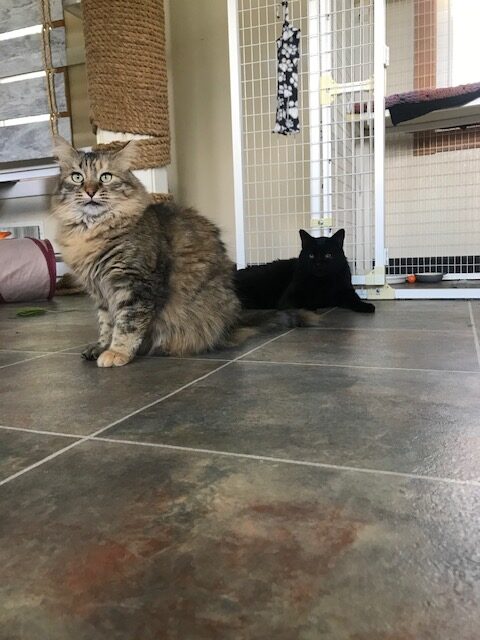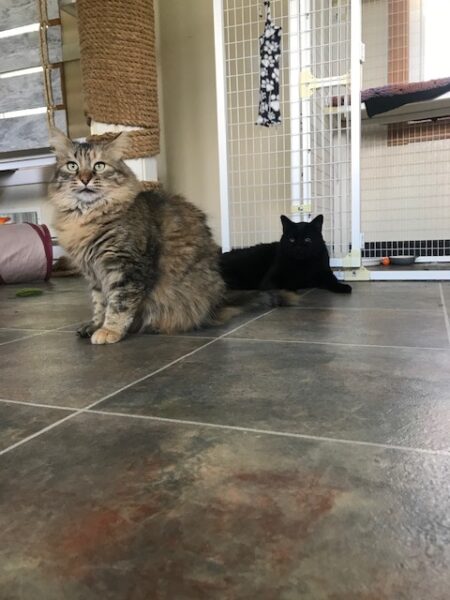
01 Sep Second Chance: The Kitty Bond
Second Chance Humane Society’s Animal Resource Center and Thrift Shops have been serving San Miguel, Ouray & Montrose Counties for 27 years. Call 626-2273 to report a lost pet, learn about adopting a homeless pet, or about our Emergency Response, Community Medical, Spay/Neuter, Volunteer, or other services. View shelter pets and services online: www.adoptmountainpets.org.
Go here for more options from Second Chance.

Although an estimated 90% of bird species partner up for life, it is estimated that only 3% to 5% of all mammal species form monogamous (albeit somewhat complicated) relationships. Why so many birds? Why so few mammals? Good questions, although those are not the answers you will find in this week’s Second Chance Pet Column.
We are familiar with the steadfast loyal ways of species such as Canadian Geese and wolves, but did you know that beavers, prairie voles (who also split nest-building and child-rearing duties equally – go voles!), gibbons, and barn owls form life-long partnerships. Such eternal commitment even extends into the sea by species such as seahorses, who are also unique in that the males actually give birth to the couple’s progeny.
The monogamous ways of the vast majority of birds is punctuated by the black vulture whose communities enforce this lifestyle. According to BBC Earth: “If a partner is caught philandering in public, the rest of the flock will turn on them with a brutal attack, forcing them to retreat to the marital nest – and in the process dissuading any other vultures from considering infidelity in the future.” That probably doesn’t result in a blissful union, or reunion, but is apparently effective.
Lifelong monogamous relationships is one thing, what about those animals you see on various social media platforms who have formed unlikely attachments such as Kate the Great Dane and Pippin the fawn or Desi Moo Moo the dairy cow and Lucy the pig? And, of course, many of you have seen a dog and cat pair in your lifetimes, all examples illustrating how important we all are to one another, underlined by the 68% of households with pets in the U.S.
So where am I going with all of this? Point one: humans are not the only species that bond for life. Point two: animals form deep attachments. Point three: I have bonded closely with my friend Sassy and we need to find a new home together. How’s that for a segue?
Some cats never bond with their feline family members but others do, sometimes as littermates; sometimes a little later in life. Deeply bonded cats will spend the majority of their time together. They will eat at the same time, play with one another, groom one another, sleep together and lounge together. We also become rather depressed when separated.
That is how I feel about my girl Sassy who I have spent most of my life with. Becoming homeless was hard enough, I just want to live the rest of my life with my Sassy girl. Although adopting two cats sounds like a lot, adopting two bonded cats is actually easier than one cat on its own. We keep each other company and will adjust to you and your home more quickly. We keep each other happy and will keep you happy too.
My name is Ebony. I am a 10-year-young male black cat; Sassy is a 7-year-young, female, orange and brown tabby. We both love making up games with string toys. I am more of a cuddler; Sassy is more independent, but still loves attention. We will teach you what a lifetime of love can bring to your world, come meet us today!


Sorry, the comment form is closed at this time.